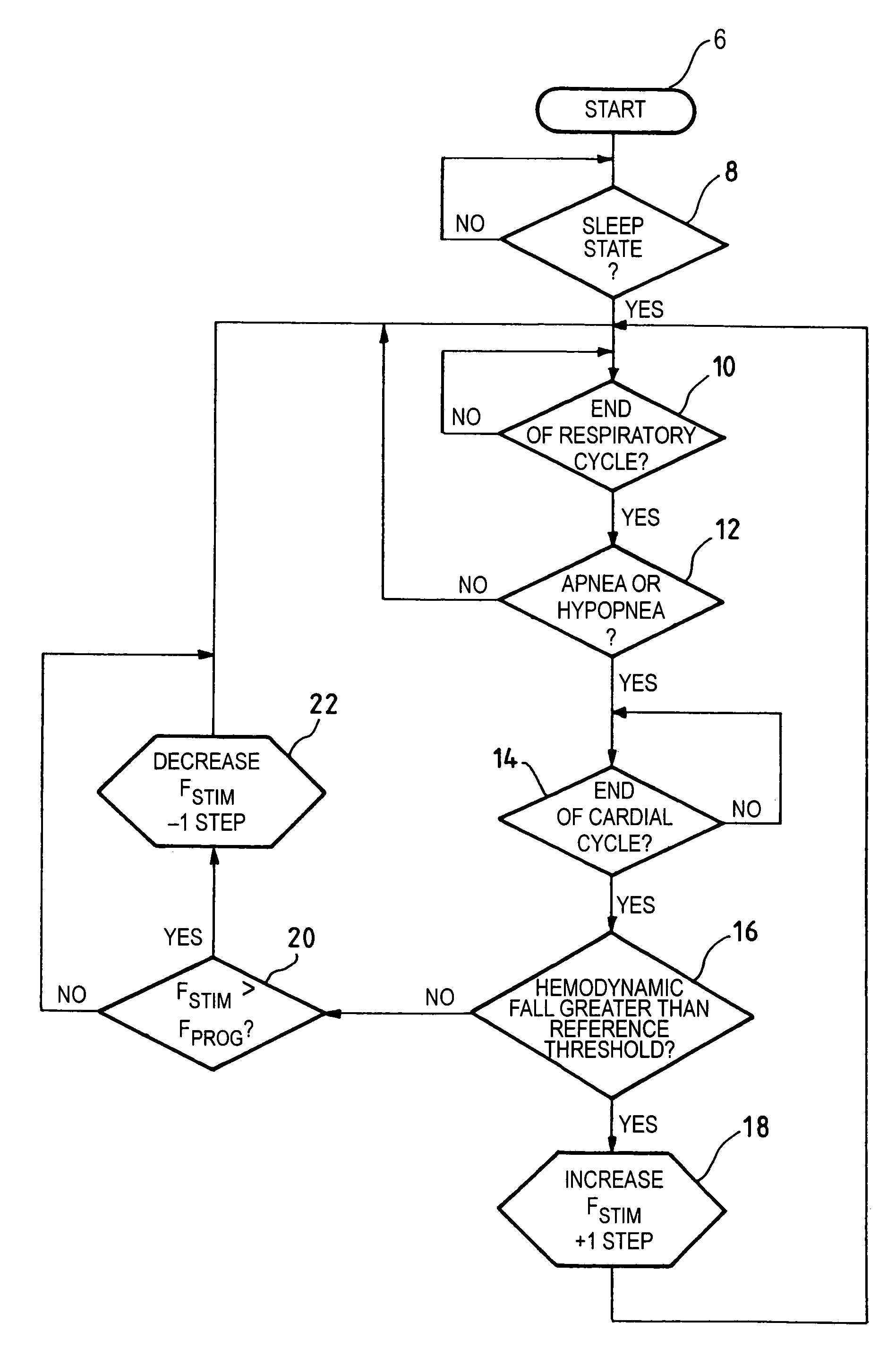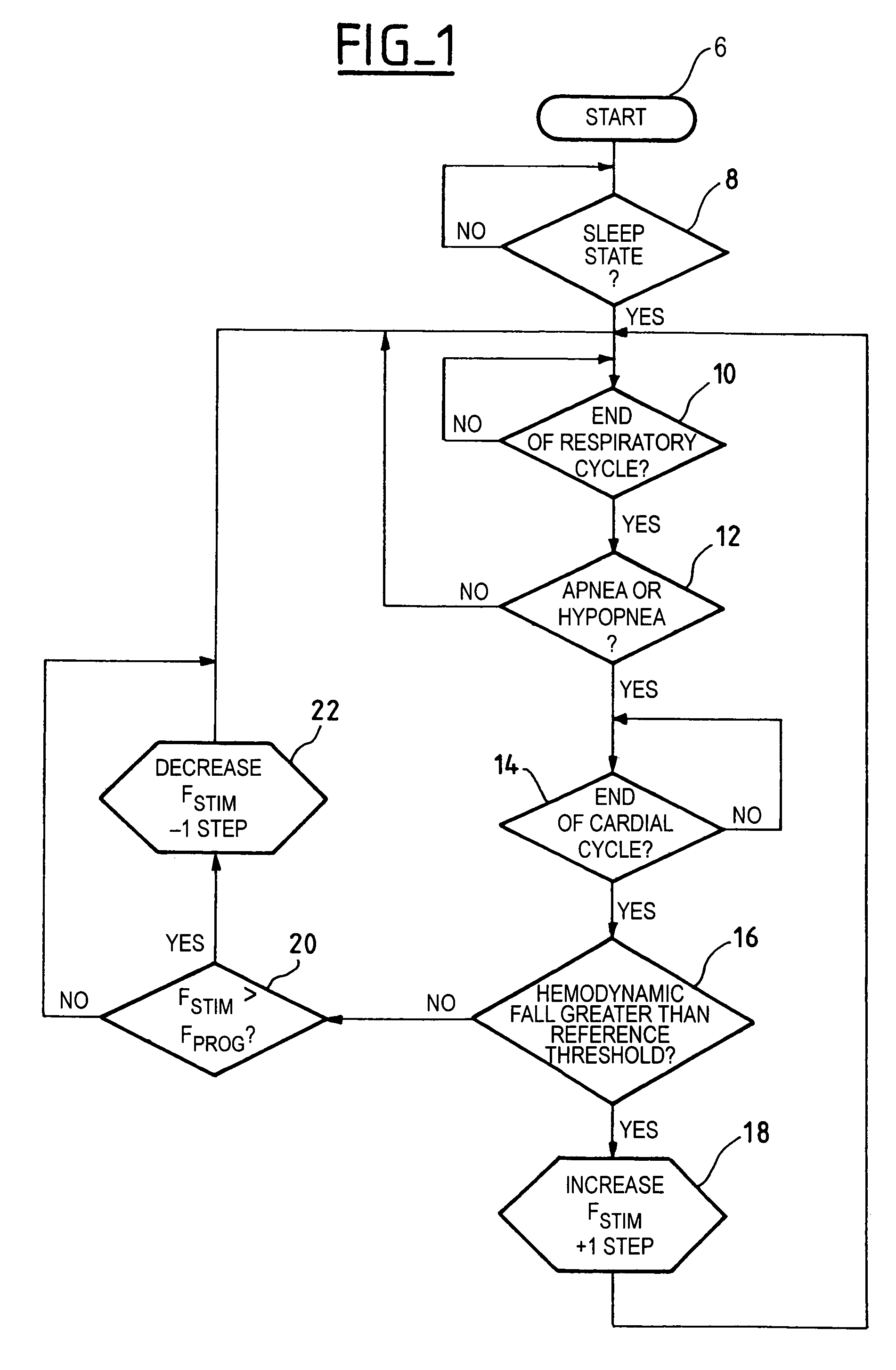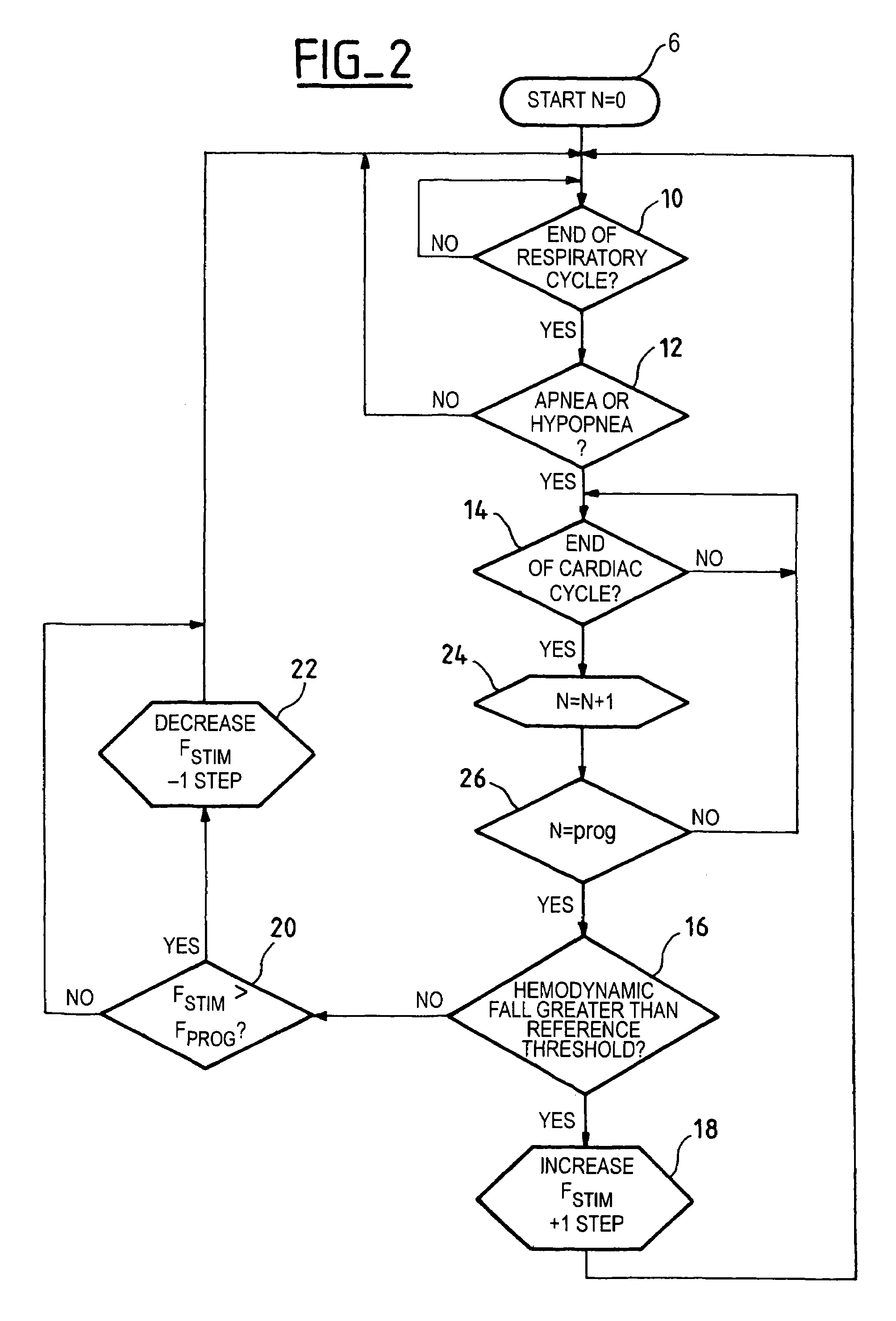Management of respiratory pauses of hypopnea in an active implantable medical device of the cardiac pacemaker, defibrillator, cardiovertor or multisite device type
a multi-site device, active technology, applied in the direction of heart stimulators, electrophysiology, therapy, etc., can solve the problems of increased risk of road (automobile) accidents, difficult to implement direct measurement of oxygen saturation in a simple and permanent manner in the context of an active implanted medical device, and achieve the effect of significantly reducing the hemodynamic signal
- Summary
- Abstract
- Description
- Claims
- Application Information
AI Technical Summary
Benefits of technology
Problems solved by technology
Method used
Image
Examples
first embodiment
[0030]One now will describe more particularly, with reference to the flow chart of FIG. 1, a first embodiment by which the invention can be implemented. The device, after having awaited the end of a respiratory cycle (stage 10), determines whether an apnea or an hypopnea has occurred (stage 12), i.e., if it found a cessation of the respiratory cycle of a duration longer than 10 seconds or a fall of the respiratory flow by more than 50%. In the negative case, no action is taken and the device continues to monitor (analyze) the respiration rate (stage 10). In the affirmative case, on the other hand, the device analyzes whether or not there were a significant variation of the hemodynamic state consecutive to the detected apnea or this hypopnea (stage 12).
[0031]To this end, after having awaited the end of the currently running cardiac cycle (stage 14), the device determines (stage 16) whether the hemodynamic sensor detected a fall of the hemodynamic signal greater than a given reference...
second embodiment
[0036]FIG. 2 illustrates the present invention, in which the same reference numbers are used for the stages that are the same as the stages described in connection with FIG. 1. In this alternative embodiment, the device operates the test of stage 16 (same as in FIG. 1) on the hemodynamic signal, but not on the cardiac cycle which immediately follows the detected apnea or hypopnea at stage 12, and rather only after N cardiac cycles following the detected apnea or hypopnea.
[0037]For this purpose, the algorithm counts the number of past cycles (stage 24, counter N) and compares the value of counter N with a programmed value prog (stage 26), for example, N=5 cycles (prog=5). Thus, at the start (stage 8), the count value N is reset to equal to zero. This embodiment is believed to make it possible for an adrenergic reaction, suitable to induce a significant modification of the hemodynamic state, to express itself naturally without need for taking a therapeutic action.
[0038]It should be un...
PUM
 Login to View More
Login to View More Abstract
Description
Claims
Application Information
 Login to View More
Login to View More - R&D
- Intellectual Property
- Life Sciences
- Materials
- Tech Scout
- Unparalleled Data Quality
- Higher Quality Content
- 60% Fewer Hallucinations
Browse by: Latest US Patents, China's latest patents, Technical Efficacy Thesaurus, Application Domain, Technology Topic, Popular Technical Reports.
© 2025 PatSnap. All rights reserved.Legal|Privacy policy|Modern Slavery Act Transparency Statement|Sitemap|About US| Contact US: help@patsnap.com



